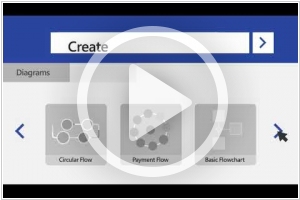Microsoft Visio vs XMind
June 18, 2023 | Author: Adam Levine
20
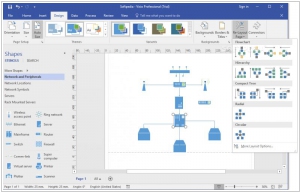
Create professional diagrams to simplify complex information with updated shapes, collaboration tools and data-linked diagrams. Simplify complex information with professional diagrams you can create in just a few clicks. Visio makes diagramming simple - whether you want to quickly capture a flowchart that you brainstormed on a whiteboard, map an IT network, build an organizational chart, document a business process, or draw a floor plan.
21
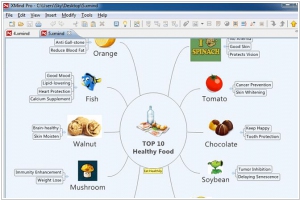
The Most Popular Mind Mapping Tool. Millions of people use XMind to clarify thinking, manage complex information, run brainstorming and get work organized. Unlike most alternatives XMind is an open source project, which means it's free to download and free to use forever. XMind Plus/Pro with more professional features are also available.
Microsoft Visio and XMind are both powerful visualization tools, but they serve different purposes and target different user needs.
Microsoft Visio is primarily a diagramming and flowcharting tool widely used for creating professional-level diagrams, such as organizational charts, network diagrams, and process flows. It offers an extensive library of shapes and templates, precise control over diagram elements, and advanced features for data connectivity and automation. Microsoft Visio is often favored by business professionals, engineers, and project managers who require detailed and precise visual representations.
XMind, on the other hand, is a dedicated mind mapping and brainstorming tool designed to capture and organize ideas in a visual format. It provides an intuitive interface for creating mind maps, concept maps, and other hierarchical diagrams. XMind offers various styling options, collaboration features, and integration with popular productivity tools. It is particularly useful for creative professionals, students, and anyone seeking a flexible and user-friendly tool for idea generation and knowledge organization.
See also: Top 10 Diagramming software
Microsoft Visio is primarily a diagramming and flowcharting tool widely used for creating professional-level diagrams, such as organizational charts, network diagrams, and process flows. It offers an extensive library of shapes and templates, precise control over diagram elements, and advanced features for data connectivity and automation. Microsoft Visio is often favored by business professionals, engineers, and project managers who require detailed and precise visual representations.
XMind, on the other hand, is a dedicated mind mapping and brainstorming tool designed to capture and organize ideas in a visual format. It provides an intuitive interface for creating mind maps, concept maps, and other hierarchical diagrams. XMind offers various styling options, collaboration features, and integration with popular productivity tools. It is particularly useful for creative professionals, students, and anyone seeking a flexible and user-friendly tool for idea generation and knowledge organization.
See also: Top 10 Diagramming software
Microsoft Visio vs XMind in our news:
2023. Xmind now allows to track tasks
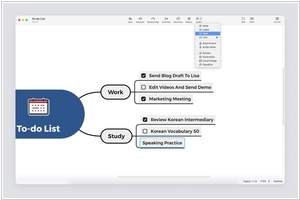
The latest update of mind-mapping application Xmind has introduced a new Task Tracking feature. This feature allows users to seamlessly incorporate tasks into their mind maps and easily monitor their progress. By doing so, you can effectively break down your objectives into smaller, more manageable steps, reducing their overall complexity and making them more attainable. This innovative addition caters to a wide range of needs, including planning, time management, and project management. Within this feature, you have the ability to create tasks and mark them as completed, enhancing your task management capabilities. Furthermore, you can monitor the ongoing status of task completion, gaining a clear understanding of your current position and what lies ahead. What adds a practical dimension to this is the ability to filter out less crucial information, allowing you to focus solely on the tasks that matter most to you. One of the primary benefits of task tracking is its role in task prioritization. By identifying and labeling your tasks, you gain a comprehensive view of what must be accomplished and can discern which tasks take precedence in terms of urgency and importance. This serves as a motivating factor, ensuring that you allocate your time and energy wisely and that critical tasks are not neglected.
2019. XMind adds audio-notes
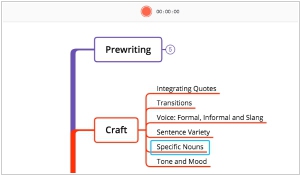
Taking notes during meetings or lectures, as well as creating mind maps, can often be challenging tasks. However, XMind has introduced an effective solution with its new feature called Audio Note. Unlike traditional note-taking methods that rely on images and context, Audio Note focuses on recordings. Users can record audio related to specific topics and sync them with text on mind maps, providing further elaboration on corresponding subjects. This feature significantly enhances input efficiency, which is especially crucial when creating mind maps on mobile devices. With fleeting moments of inspiration, the ability to capture ideas instantly becomes invaluable. XMind has incorporated Audio Note into its iOS version, greatly improving the input efficiency for users. Additionally, Apple has also implemented a similar interaction feature in iOS 12.
2018. Microsoft Visio integrates with Hololense

Microsoft is positioning its AR headset, HoloLens, as a tool to enhance productivity, improve quality, and ensure safety by enabling companies to reimagine their processes, data, and workforce, ultimately driving business impact and customer value. One area of focus for Microsoft is updating its Visio software, which now includes features tailored to intelligent manufacturing scenarios, such as facility layout optimization. To demonstrate the potential of intelligent manufacturing, Microsoft will collaborate with its customer, Dürr AG, and incorporate the expertise of Visio partners, including FaciWare GmbH for facility management solutions and X-Visual Technologies GmbH for PnID (Piping and Instrumentation Diagram) solutions.
2018. XMind ZEN features new engine and new designed themes
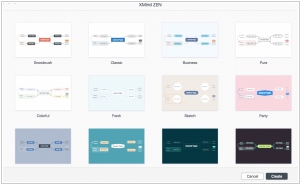
The latest release of XMind, known as XMind ZEN, utilizes a new engine that boasts impressive capabilities in terms of extending functions and graphics performance. With the implementation of SVG rendering, all elements within a mind map, including lines, themes, and diagrams, are flawlessly displayed. XMind ZEN offers 30 meticulously crafted themes, catering to diverse scenarios, whether you're a student or a business professional. These visually appealing themes enable effortless creation of stunning and polished mind maps. Additionally, there are 89 original stickers available, adding more elements and vibrant expressions to your maps. The newly introduced ZEN Mode allows you to maintain utmost focus on your thoughts. In this mode, your sole focus is on expressing and visualizing your ideas. The interface is intentionally designed to be clear, simple, and free from distractions or interruptions. We firmly believe that concentration is achieved by prioritizing and eliminating unnecessary elements. When it comes to focus, less is indeed more.
2017. Microsoft launches Visio Online editor
Microsoft Visio held the distinction of being the initial favored tool for constructing schemes, diagrams, and designing software and site interfaces. However, the emergence of numerous online alternatives such as Gliffy and OmniGiraffe, offering collaborative features, caused many users to shift their attention away from the resource-intensive Visio. Interestingly, while Microsoft released online versions of popular Office editors like Word and Excel, they initially did not provide an online version of Visio. Only in 2016 did the company introduce Visio Online Viewer, which allowed users to view Visio files online. Recently, Visio Online has transformed into a comprehensive application that permits diagram creation and editing directly in the browser, facilitating team collaboration. This full-featured version is priced at $5 per user per month, while the free Visio Online Viewer is included in nearly all Office 365 plans.
2017. Visio Online adds new themes, shapes and guides
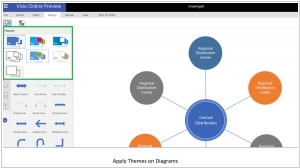
Microsoft has introduced an update to its Visio Online service, enabling users to effortlessly create, edit, and share diagrams directly from their web browser. The addition of Quick Shapes greatly enhances the diagram creation process. By hovering over the arrows adjacent to any shape, users can access the quick shapes panel, allowing them to select the desired shape that will automatically connect to their existing one. Furthermore, smart guides facilitate shape alignment, while the flexibility to customize connector types based on specific requirements has been implemented. In addition to expanding the shape library, Microsoft has incorporated a search-box above the shape panel, enabling users to easily locate their desired shapes. Beyond the capability to include personal images, users now have the option to utilize the "Find and Add a picture from web" feature to incorporate external images from the internet.
2017. Microsoft Injects Power BI Insights Into Visio Diagrams
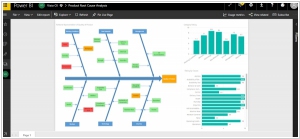
Microsoft Power BI users now have the capability to integrate their business analytics with floorplans, business processes, and other diagrams created in Visio. Currently available in preview, this new feature allows users to leverage diagrams created in Visio as a foundation to overlay valuable business insights. By combining Visio and Power BI, users can present and analyze data both as diagrams and traditional Power BI visuals in a unified platform, facilitating operational and business intelligence for a holistic understanding. It is possible to establish a connection with a Visio diagram hosted on SharePoint or OneDrive for Business. The underlying Power BI data is then automatically and intelligently linked to the diagram based on its shape properties, eliminating the need for manual linking.
2017. XMind Cloud gets a new look and feel
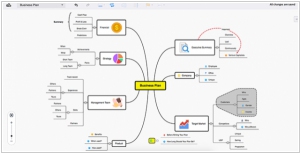
The online mind mapping tool XMind Cloud has received a significant update, introducing exciting new features and substantial improvements. With XMind Cloud, you gain the convenience of accessing, viewing, and editing your mind maps from anywhere you go. The update brings a host of enhancements, including the ability to add markers, notes, and hyperlinks with a simple click. The user interface has been redesigned to provide a simpler and more intuitive experience, making it effortless to accomplish your tasks. Notably, the performance has been greatly improved, resulting in faster file loading times, which significantly enhances work efficiency and improves the overall mind mapping experience. Additionally, the introduction of the Trash folder allows for easy recovery of deleted files, ensuring that you can retrieve important content with ease.
2017. Microsoft releases public version of Visio Online for Office 365 commercial users
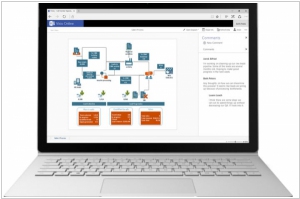
Microsoft has unveiled a cloud-based edition of Visio, granting paid Office 365 users access to this popular software for the first time. Initially, a preview version of Visio Online was released exclusively to a limited group of Office 365 users in November, and Microsoft has since incorporated their valuable feedback into the current version. Similar to its predecessor, the public release of Visio Online is free and primarily designed to enable users of the full Visio for Windows application to seamlessly view and collaborate on Visio diagrams across various platforms via a web browser. As Visio Online functions solely as a viewer, it is necessary to create your Visio diagrams using the complete version and subsequently share them through OneDrive for Business or SharePoint Online. Once the diagrams are available online, you can utilize the Visio Online version to conveniently share them with others.
2017. Visio allows to convert process map data in Excel into Visio diagrams
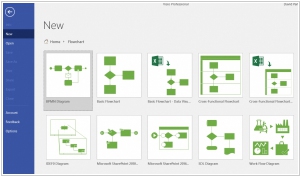
Microsoft has introduced a new feature called Data Visualizer in Visio, enabling the automatic conversion of process map data from Excel into data-driven Visio diagrams. This functionality empowers business analysts to transform process steps and associated metadata, organized in a structured Excel table, into visually appealing Visio diagrams. Users have the flexibility to utilize either a pre-designed Excel template or their own customized spreadsheet. The Data Visualizer feature includes a basic template as well as a template specifically designed for cross-functional flowcharts. The latter provides a sample mapping table that can be populated with diagram metadata. The mapping table consists of predefined columns such as process step number, description, dependencies, owner, function, phase, and more. Additionally, users have the freedom to personalize the table by adding their own custom columns, ensuring that it aligns with their specific business requirements. With Data Visualizer, Microsoft aims to streamline the process of creating data-driven Visio diagrams, empowering analysts to efficiently visualize and communicate complex information.

